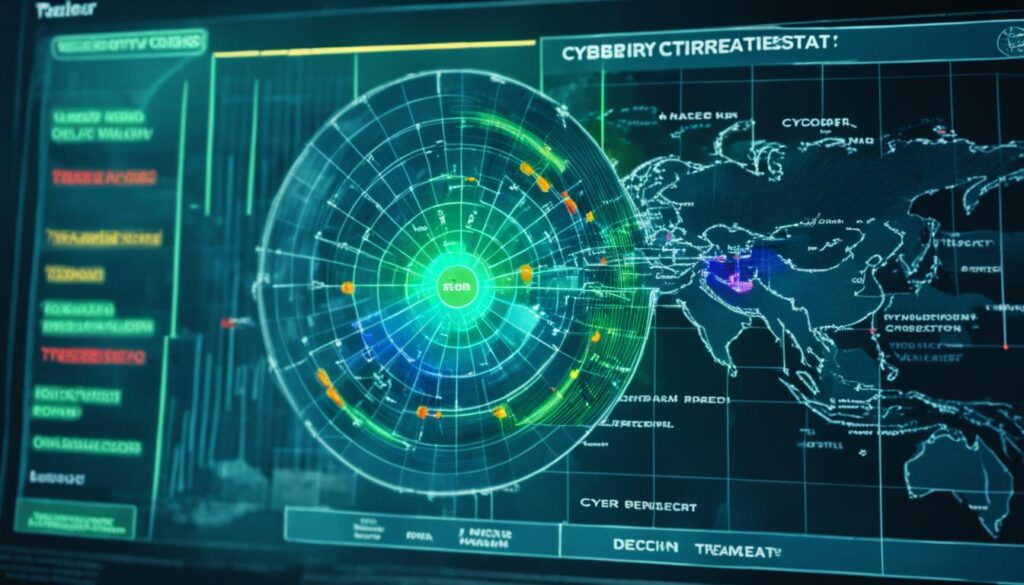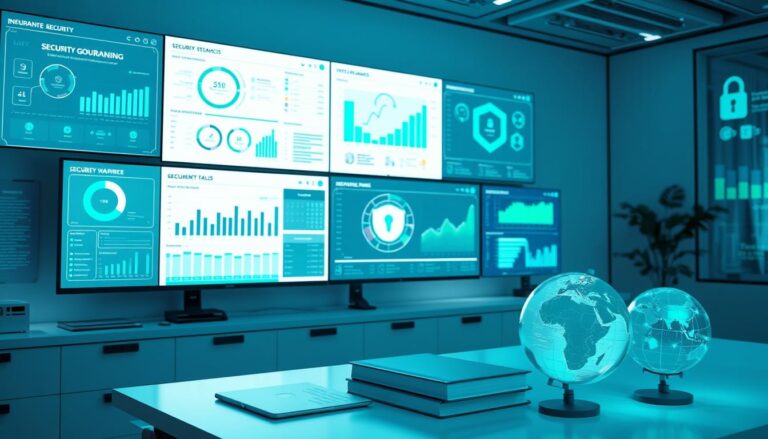
Managing cybersecurity risks is a critical responsibility for IT teams in today’s complex digital landscape. With the increasing reliance on technology and the constant evolution of cyber threats, organizations must be proactive in their approach to risk management to protect their sensitive data and maintain a strong security posture. This article will explore the complexities of cybersecurity risk management, the importance of implementing effective risk management strategies, the risk management process, frameworks that can guide organizations in their efforts, and the benefits of cybersecurity risk management. By understanding these key aspects and adopting a comprehensive approach, IT teams can effectively mitigate risks and safeguard their organization’s information assets.
– Cybersecurity risk management is crucial for IT teams to protect sensitive data and maintain a strong security posture.
– Organizations must be proactive and adopt a comprehensive approach to risk management in today’s complex digital landscape.
– Effective risk management strategies help prioritize risks, implement mitigation measures, and ensure ongoing risk monitoring.
– IT teams must continuously evaluate and address potential cyber threats to safeguard the organization’s information assets.
– The involvement of all employees and business unit leaders is essential in the cybersecurity risk management process.
– The use of frameworks such as the NIST Cybersecurity Framework, ISO standards, DoD RMF, and FAIR can provide valuable guidance.
– Implementing effective cybersecurity risk management offers benefits such as data protection, cost savings, regulatory compliance, reputation protection, and business continuity.
– Calculating cybersecurity risk involves assessing the impact and likelihood of potential attacks.
– Mapping and monitoring digital assets, as well as implementing vulnerability management and cyber threat intelligence, are crucial in risk management efforts.
– Mitigating cybersecurity risks involves implementing technological measures, best practices, and ongoing assessment and management of residual risk.
– A robust cybersecurity risk management strategy should include the use of digital risk protection platforms and continuous monitoring.
– Cybersecurity risk management allows organizations to assess their current risk profile, make informed decisions, and reduce vulnerabilities.
– By prioritizing cybersecurity risk management, IT teams can defend against attacks, protect sensitive data, and operate with confidence.
Key Takeaways:
- Cybersecurity risk management is crucial for IT teams to protect sensitive data and maintain a strong security posture.
- Effective risk management strategies help prioritize risks, implement mitigation measures, and ensure ongoing risk monitoring.
- The involvement of all employees and business unit leaders is essential in the cybersecurity risk management process.
- Frameworks such as the NIST Cybersecurity Framework, ISO standards, DoD RMF, and FAIR can provide valuable guidance.
- Implementing effective cybersecurity risk management offers benefits such as data protection, cost savings, regulatory compliance, reputation protection, and business continuity.
The Complexities of Cyber Risk Management
Managing cyber risk today is more complex due to various factors. Firstly, organizations rely on numerous cloud services and work with multiple third-party vendors, which increases the potential for security vulnerabilities. This exposes them to vendor risk, where the actions or shortcomings of these vendors can directly impact the organization’s security. It becomes crucial for organizations to carefully vet and manage their vendors to mitigate these risks effectively.
Secondly, there is a growing number of laws and regulations that govern data protection, such as the General Data Protection Regulation (GDPR) and the California Consumer Privacy Act (CCPA). These regulations place additional responsibilities on organizations to ensure the security and privacy of customer data. Non-compliance can lead to severe financial and reputational consequences.
Furthermore, the COVID-19 pandemic has forced organizations to adopt remote work policies, resulting in unsecured networks and new security challenges. Remote work introduces vulnerabilities that cybercriminals can exploit, leading to increased cybersecurity risks. Organizations need to implement robust security measures to secure remote connections and educate employees about safe remote work practices.
Lastly, budget cuts have become a reality for many organizations, affecting their cybersecurity efforts. Limited resources can hinder the implementation of comprehensive security measures and the ability to respond effectively to cyber threats. As a result, organizations must prioritize and allocate their limited budgets toward critical cybersecurity initiatives.
This image visually represents the interconnected complexities of managing cyber risk in today’s digital landscape.
The Complexities of Cyber Risk Management
| Challenges | Impact |
|---|---|
| Vendor Risk | Increased potential for security vulnerabilities |
| Laws and Regulations | Additional responsibilities and compliance requirements |
| Remote Work | Unsecured networks and new security challenges |
| Budget Cuts | Limited resources for cybersecurity efforts |
This table summarizes the complexities of cyber risk management, highlighting the challenges and their impact on organizations.
The Importance of Cybersecurity Risk Management
Cybersecurity risk management plays a crucial role in safeguarding organizations’ sensitive data and maintaining a robust security posture. By identifying, analyzing, evaluating, and addressing cybersecurity threats, organizations can protect themselves from potential cyberattacks and data breaches. This responsibility extends beyond the security team; it requires active involvement from all employees and business unit leaders.
Implementing effective risk management strategies enables organizations to prioritize risks based on their potential impact and likelihood. By doing so, they can allocate resources and implement appropriate mitigation measures to reduce vulnerabilities. Moreover, ongoing risk monitoring ensures that organizations stay ahead of emerging threats and can adjust their security measures when necessary.
The comprehensive approach to cybersecurity risk management helps organizations safeguard their information assets and mitigate potential cyber threats. It encompasses various aspects, including risk assessment, risk mitigation, and enterprise security. By prioritizing cybersecurity risk management, organizations demonstrate a commitment to protecting their data and maintaining a secure environment for their operations.
The Benefits of Cybersecurity Risk Management
Cybersecurity risk management offers several benefits to organizations:
- Data Protection: Implementing robust risk management strategies helps organizations safeguard their sensitive data and prevent data breaches.
- Cost Savings: Efficient risk management enables organizations to avoid the costly consequences of a data breach, such as financial losses and reputational damage.
- Regulatory Compliance: By prioritizing risk management, organizations can ensure compliance with relevant laws and regulations, reducing the risk of fines or legal repercussions.
- Reputation Protection: Effective risk management demonstrates a commitment to cybersecurity, enhancing an organization’s reputation and building trust with customers and stakeholders.
- Business Continuity: By mitigating cyber risks, organizations can minimize disruptions to their operations, ensuring continuity even in the face of cyberattacks or other security incidents.
The Cybersecurity Risk Management Process
The cybersecurity risk management process involves several key steps:
- Risk Identification: Organizations must identify potential risks through thorough threat and vulnerability analysis.
- Risk Assessment: Assessing risks involves evaluating their likelihood and potential impact to prioritize and inform mitigation efforts.
- Risk Response: Based on the risk assessment, organizations develop and implement a risk response strategy that includes technological measures and best practices.
- Risk Monitoring: Ongoing risk monitoring is crucial to ensure the effectiveness of risk management strategies and adapt to evolving cyber threats.
By following these steps, organizations can establish a comprehensive cybersecurity risk management framework that reduces vulnerabilities and strengthens their overall security posture.
Framework for Cybersecurity Risk Management
Several frameworks provide guidance for organizations seeking to enhance their cybersecurity risk management practices:
| Framework | Description |
|---|---|
| NIST Cybersecurity Framework (CSF) | A widely recognized framework that offers guidance for assessing and mitigating cyber risks. |
| ISO/IEC 27000 | A series of standards providing best practices for managing information security risks. |
| ISO 31000 | A risk management standard that can be applied to cybersecurity risks. |
| DoD Risk Management Framework (RMF) | A framework specific to the Department of Defense, designed to evaluate and address cybersecurity risks. |
Organizations can choose the framework that best aligns with their specific needs and goals to enhance their cybersecurity risk management practices.
The Cybersecurity Risk Management Process
The cybersecurity risk management process involves several steps that organizations must follow to effectively protect their sensitive information assets:
- Risk Identification: In this initial step, organizations analyze potential threats and vulnerabilities within their systems. This includes understanding the nature of threats, identifying vulnerabilities, and assessing the potential consequences of their exploitation. By conducting a thorough threat and vulnerability analysis, organizations can identify the specific risks they face.
- Risk Assessment: Once risks are identified, they need to be assessed to determine their likelihood and potential impact. This involves analyzing the probability of a threat occurrence and evaluating the potential consequences if it materializes. Risk assessment helps organizations prioritize risks based on their severity and informs the allocation of resources to address them effectively.
- Risk Response: Organizations then develop a comprehensive risk response strategy. This strategy outlines the measures and actions that will be implemented to mitigate identified risks. Risk response strategies may include the deployment of technological solutions, the implementation of best practices, or the adoption of security controls to reduce the likelihood and impact of potential attacks.
- Risk Monitoring: Continuous risk monitoring is crucial to ensure the effectiveness of the risk management strategies. Organizations need to establish robust monitoring mechanisms to detect and evaluate potential threats in real-time. This allows them to respond promptly and adjust risk mitigation measures when necessary. Ongoing monitoring helps organizations stay vigilant against emerging risks and adapt their strategies accordingly.
By following this process, organizations can proactively identify and address cyber risks, strengthening their cybersecurity posture and protecting valuable data.
Having a clear understanding of the cybersecurity risk management process is essential for organizations that aim to protect their digital assets effectively. By identifying risks, assessing them, responding appropriately, and continuously monitoring the landscape, organizations can mitigate potential threats and safeguard their valuable information.
Frameworks for Cybersecurity Risk Management
When it comes to managing cybersecurity risk, organizations can benefit from utilizing established frameworks that provide guidance and structure. These frameworks offer a systematic approach to assess, mitigate, and manage cybersecurity risks effectively. Here are four prominent frameworks that organizations can consider incorporating into their risk management strategies:
NIST Cybersecurity Framework (CSF)
The NIST Cybersecurity Framework is a widely recognized and highly regarded framework that provides organizations with a flexible, risk-based approach to managing cybersecurity risks. It offers comprehensive guidelines for assessing, addressing, and mitigating risks across critical infrastructure sectors. The NIST CSF consists of five core functions: Identify, Protect, Detect, Respond, and Recover. By aligning their cybersecurity measures with the NIST CSF, organizations can enhance their risk management capabilities and strengthen their overall security posture.
ISO Frameworks
The International Organization for Standardization (ISO) offers several frameworks that focus on cybersecurity risk management and general risk management practices. ISO/IEC 27000 series establishes standards for information security management systems (ISMS) and includes ISO/IEC 27001, which provides requirements for implementing and maintaining ISMS. ISO 31000 is a broader framework that addresses risk management across various organizational domains. These ISO frameworks enable organizations to develop systematic approaches to identifying, assessing, and treating cybersecurity risks while ensuring compliance with international standards.
DoD Risk Management Framework (RMF)
The Department of Defense (DoD) Risk Management Framework (RMF) is specific to the defense industry but can serve as a valuable reference for organizations seeking to evaluate and address cybersecurity threats. The DoD RMF focuses on managing risks associated with information systems and provides a structured and disciplined approach for implementing cybersecurity controls. By following the DoD RMF, organizations can strengthen their risk management practices and align them with the specific requirements and regulations of the defense sector.
Factor Analysis of Information Risk (FAIR) Framework
The Factor Analysis of Information Risk (FAIR) framework offers a quantitative approach to cybersecurity risk management. It provides organizations with explicit guidelines for assessing, analyzing, and managing their cybersecurity risks. The FAIR framework enables organizations to quantify risks in monetary terms, facilitating a better understanding of the potential impact and cost-effectiveness of risk mitigation measures. By utilizing the FAIR framework, organizations can make informed decisions regarding risk management investments and prioritize their efforts accordingly.
By adopting these frameworks, organizations can establish a solid foundation for their cybersecurity risk management practices. Each framework offers unique advantages and can be tailored to suit specific industry requirements and organizational objectives. Choosing the right framework helps organizations navigate the complexities of cyber risk and enhance their overall security posture.
Benefits of Cybersecurity Risk Management
Implementing cybersecurity risk management offers several benefits to organizations. It helps protect sensitive data and prevents cyberattacks and data breaches. Effective risk management can also save businesses money by avoiding the high costs associated with a data breach. It ensures regulatory compliance, reducing the risk of fines or lawsuits. Additionally, it helps protect the organization’s reputation by demonstrating a commitment to cybersecurity. Lastly, cybersecurity risk management supports business continuity by preventing disruptions caused by cyberattacks.
Calculating Cybersecurity Risk
Calculating cybersecurity risk is a crucial step in effective Cybersecurity Risk Management. It involves assessing the impact and likelihood of potential attacks to prioritize risks and inform risk mitigation strategies. By understanding the level of risk, organizations can make informed decisions and allocate resources effectively.
Many organizations use a common risk equation to calculate cybersecurity risk:
Risk = Impact x Likelihood
However, quantifying risk is not always straightforward, as it requires considering various variables. Therefore, organizations often conduct comprehensive Cybersecurity Risk Assessments to estimate the likelihood and potential impact of different threats.
These assessments help organizations:
- Evaluate the likelihood and potential impact of different cyber threats
- Identify vulnerabilities and potential entry points for attacks
- Understand the consequences of successful attacks
By prioritizing risks based on their potential impact and likelihood, organizations can focus their resources on the most critical areas and develop risk mitigation strategies accordingly.
Image: Illustration of Cybersecurity Risk Calculation
Understanding and calculating cybersecurity risk allows organizations to:
- Identify potential threats and vulnerabilities
- Develop appropriate risk mitigation strategies
- Allocate resources effectively
- Make informed decisions related to cybersecurity investments
By continuously assessing and recalculating cybersecurity risk, organizations can stay proactive in managing their cybersecurity posture and protect against evolving threats.
Mapping and Monitoring Cybersecurity Risks
To effectively manage cybersecurity risks, organizations must prioritize mapping and monitoring their digital assets. This crucial process involves identifying and quantifying the attack surface and continuously monitoring for potential threats. By implementing robust threat monitoring, vulnerability management, and leveraging cyber threat intelligence, organizations can proactively identify and mitigate risks before they escalate into major security incidents.
Threat Monitoring
Threat monitoring plays a vital role in cybersecurity risk management. It involves actively monitoring various sources, including the dark web, to identify potential threats and references to an organization’s digital assets. This proactive approach enables organizations to gain situational awareness and detect emerging risks before they cause significant harm. By continuously monitoring for new threats and vulnerabilities, organizations can respond promptly and mitigate potential risks.
Vulnerability Management
Vulnerability management is an essential component of cybersecurity risk management. It focuses on addressing known vulnerabilities through patching, system upgrades, and other mitigation measures. By regularly assessing and patching vulnerabilities in software, infrastructure, and network systems, organizations can significantly reduce the attack surface and minimize the potential for exploitation. Effective vulnerability management enhances the organization’s overall security posture and reduces the likelihood of successful cyberattacks.
Cyber Threat Intelligence
Cyber threat intelligence provides organizations with valuable insights into emerging threats and trends in the cybersecurity landscape. By analyzing data from various sources, organizations can gain actionable intelligence to better prepare and respond to potential risks. Cyber threat intelligence helps organizations stay ahead of malicious actors and anticipate their tactics, techniques, and procedures. With this knowledge, organizations can implement proactive measures to protect their digital assets and strengthen their cybersecurity defenses.

| Benefits of Mapping and Monitoring Cybersecurity Risks |
|---|
| 1. Early detection of potential threats |
| 2. Enhances situational awareness |
| 3. Minimizes the attack surface |
| 4. Enables proactive risk mitigation |
| 5. Strengthens cyber defense capabilities |
By incorporating mapping and monitoring into their cybersecurity risk management strategy, organizations can significantly improve their ability to identify, assess, and address threats in a constantly evolving threat landscape. Adopting a proactive approach helps ensure the continuous protection of sensitive data and the resilience of critical systems and infrastructure.
Mitigating Cybersecurity Risks
Successful cybersecurity risk management involves implementing a range of measures to reduce the likelihood and impact of attacks. By combining technological measures and best practices, organizations can strengthen their defenses and protect their sensitive data.
Technological Measures
Implementing robust technological measures is essential in mitigating cybersecurity risks. Some effective measures include:
- Encryption: Encrypting sensitive data helps protect it from unauthorized access, ensuring confidentiality.
- Firewalls: Firewalls act as a barrier between internal systems and external networks, filtering and monitoring incoming and outgoing traffic.
- Threat Hunting Software: Utilizing threat hunting software allows organizations to proactively search for and identify potential threats within their networks.
Best Practices
In addition to technological measures, following best practices is crucial in mitigating cybersecurity risks:
- Cybersecurity Training Programs: Educating employees about cybersecurity risks and best practices helps create a culture of security awareness and empowers individuals to make informed decisions.
- Software Updates: Keeping software and systems up to date with the latest security patches helps address known vulnerabilities and minimize the risk of exploitation.
- Privileged Access Management: Implementing strict access control measures for privileged accounts reduces the likelihood of unauthorized access and limits potential damage in case of a breach.
While comprehensive risk mitigation efforts can significantly reduce the likelihood and impact of attacks, it’s important to acknowledge that residual risk always exists. Residual risk refers to the remaining level of risk after implementing various mitigation measures. Organizations must assess and manage residual risk to ensure ongoing security.
Table: Comparison of Technological Measures and Best Practices for Risk Mitigation
| Technological Measures | Best Practices |
|---|---|
| Encryption | Cybersecurity Training Programs |
| Firewalls | Software Updates |
| Threat Hunting Software | Privileged Access Management |
Cybersecurity Risk Management Strategy
A robust cybersecurity risk management strategy encompasses multiple components to ensure comprehensive protection. Digital Risk Protection (DRP) platforms can help organizations map and monitor their digital assets, detect threats, and mitigate risks. These platforms use indicators of compromise (IOCs) and indicators of attack (IOAs) to analyze risks and provide real-time insights. By implementing a well-defined strategy that includes DRP and continuous monitoring, organizations can effectively manage and respond to cybersecurity risks.
| Components | Description |
|---|---|
| Digital Risk Protection (DRP) Platforms | Platforms designed to help organizations map and monitor their digital assets, detect threats, and mitigate risks. |
| Indicators of Compromise (IOCs) | Specific observables or patterns that indicate a potential security incident or compromise. |
| Indicators of Attack (IOAs) | Behavioral patterns or sequences that are indicative of an ongoing or attempted cyber attack. |
| Continuous Monitoring | Ongoing monitoring and analysis of digital assets, threats, and risks to ensure proactive identification and response. |
A strong cybersecurity risk management strategy is essential in today’s evolving threat landscape. By utilizing digital risk protection platforms, organizations can gain a comprehensive understanding of their assets and detect potential threats in real-time. The use of indicators of compromise and indicators of attack provides valuable insights for risk analysis and response planning. Additionally, continuous monitoring allows organizations to stay one step ahead of emerging cyber threats and effectively manage their cybersecurity risks.
The Significance of Cybersecurity Risk Management
In the ever-evolving digital landscape, organizations face an increasing number of cybersecurity threats. To protect sensitive data and ensure business continuity, it is crucial for organizations to prioritize cybersecurity risk management. This section highlights the significance of cybersecurity risk management, focusing on risk assessment and situational awareness.
The Importance of Risk Assessment
Risk assessment plays a fundamental role in cybersecurity risk management. By conducting thorough risk assessments, organizations can identify potential vulnerabilities and quantify the potential impact of cyber threats. This enables organizations to prioritize risks and allocate resources effectively for risk mitigation.
An effective risk assessment involves:
- Identifying potential threats and vulnerabilities
- Evaluating the likelihood of those threats occurring
- Assessing the potential impact on the organization
Once risks are identified and assessed, organizations can develop strategies to address those risks and strengthen their security posture.
Fostering Situational Awareness
Situational awareness is an essential component of cybersecurity risk management. It involves continuously monitoring the digital landscape for potential threats, understanding the current risk landscape, and proactively addressing emerging risks.
By fostering situational awareness, organizations can:
- Stay informed about the latest cyber threats and attack vectors
- Assess the potential impact of emerging threats on their organization
- Ensure that appropriate security measures are in place to mitigate risks
With situational awareness, organizations can effectively respond to threats and prevent potential incidents before they escalate into major breaches.
The Benefits of Prioritizing Cybersecurity Risk Management
Organizations that prioritize cybersecurity risk management and invest in risk assessment and situational awareness gain several benefits:
| Benefits of Cybersecurity Risk Management | |
|---|---|
| 1. Enhanced Protection: | Effective risk management measures protect sensitive data and prevent cyberattacks. |
| 2. Confidence in Defending Against Attacks: | With comprehensive risk management strategies, organizations are better equipped to defend against cyber threats. |
| 3. Protection of Sensitive Data: | Risk management ensures the protection of sensitive data from unauthorized access or breach. |
| 4. Improved Business Continuity: | By mitigating risks, organizations can prevent disruptions and maintain uninterrupted operations. |
| 5. Compliance with Regulations: | Comprehensive risk management strategies ensure compliance with applicable laws and regulations. |

In conclusion, cybersecurity risk management is of utmost significance in today’s digital landscape. By conducting robust risk assessments, fostering situational awareness, and prioritizing risk mitigation efforts, organizations can protect their sensitive data and maintain a strong security posture. This proactive approach to cybersecurity enables organizations to stay ahead of potential threats and safeguard their digital assets.
Conclusion
Effective cybersecurity risk management plays a critical role in safeguarding organizations’ information assets. By following a comprehensive risk management process, which includes identifying, assessing, mitigating, and continuously monitoring risks, IT teams can strengthen their organization’s information security.
It is crucial for all employees to actively participate in the risk management process. By fostering a culture of cybersecurity awareness and ensuring everyone understands their role, organizations can create a collective responsibility for information security.
Adopting industry-standard frameworks and best practices tailored to specific needs and goals is essential. These frameworks, such as the NIST Cybersecurity Framework and ISO standards, provide guidance on assessing and mitigating risks effectively.
With effective cybersecurity risk management, IT teams can fortify their organization’s infosec posture, protect against evolving threats, and maintain the confidentiality, integrity, and availability of data. By prioritizing risk mitigation and promoting a comprehensive approach to information security, organizations can stay one step ahead in the ever-changing landscape of cyber threats.






